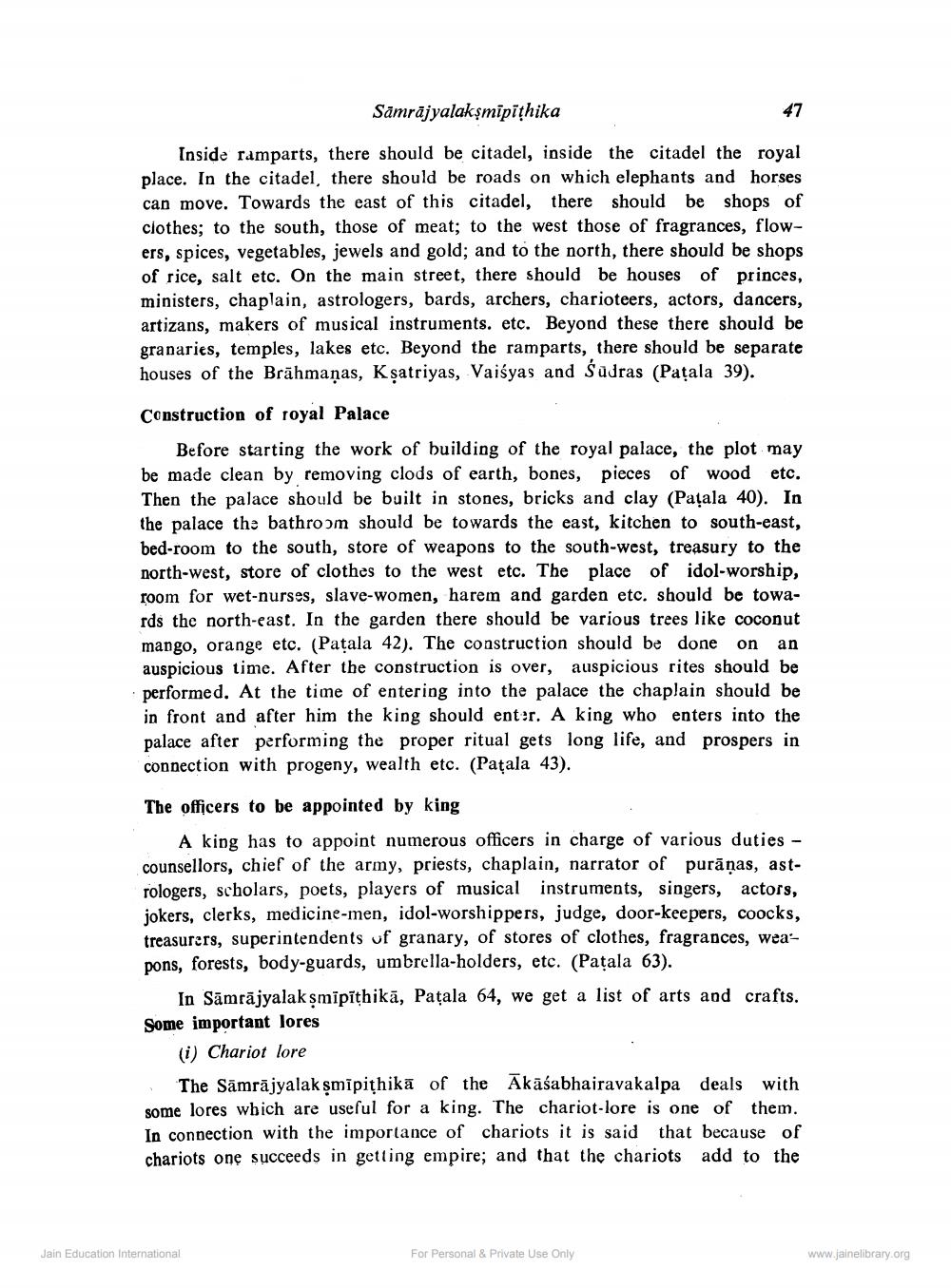________________
Sämrājyalakṣmipishika
Inside ramparts, there should be citadel, inside the citadel the royal place. In the citadel, there should be roads on which elephants and horses can move. Towards the east of this citadel, there should be shops of clothes; to the south, those of meat; to the west those of fragrances, flowers, spices, vegetables, jewels and gold; and to the north, there should be shops of rice, salt etc. On the main street, there should be houses of princes, ministers, chaplain, astrologers, bards, archers, charioteers, actors, dancers, artizans, makers of musical instruments. etc. Beyond these there should be granaries, temples, lakes etc. Beyond the ramparts, there should be separate houses of the Brāhmaṇas, Kșatriyas, Vaiśyas and Sūdras (Patala 39).
Construction of royal Palace
Before starting the work of building of the royal palace, the plot may be made clean by removing clods of earth, bones, pieces of wood etc. Then the palace should be built in stones, bricks and clay (Pagala 40). In the palace the bathroom should be towards the east, kitchen to south-east, bed-room to the south, store of weapons to the south-west, treasury to the north-west, store of clothes to the west etc. The place of idol-worship, room for wet-nurses, slave-women, harem and garden etc. should be towards the north-east. In the garden there should be various trees like coconut mango, orange etc. (Patala 42). The construction should be done on an auspicious time. After the construction is over, auspicious rites should be performed. At the time of entering into the palace the chaplain should be in front and after him the king should enter. A king who enters into the palace after performing the proper ritual gets long life, and prospers in connection with progeny, wealth etc. (Patala 43).
The officers to be appointed by king
A king has to appoint numerous officers in charge of various duties - counsellors, chief of the army, priests, chaplain, narrator of purāņas, astrologers, scholars, poets, players of musical instruments, singers, actors, jokers, clerks, medicine-men, idol-worshippers, judge, door-keepers, coocks, treasurers, superintendents of granary, of stores of clothes, fragrances, weapons, forests, body-guards, umbrella-holders, etc. (Patala 63).
In Sāmrājyalakşmipīthikā, Patala 64, we get a list of arts and crafts. Some important lores
(i) Chariot lore
The Sāmrājyalak smipithikā of the Akāśabhairavakalpa deals with some lores which are useful for a king. The chariot-lore is one of them. In connection with the importance of chariots it is said that because of chariots one succeeds in getting empire; and that the chariots add to the
Jain Education International
For Personal & Private Use Only
www.jainelibrary.org




